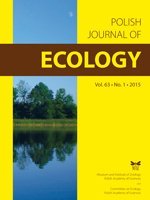Due to decrease in the area of extensively managed, semi-natural grasslands, that contribute to high biodiversity level preservation, the conversion of highly productive meadows to extensively managed, species-rich grasslands is now regarded as an important task for nature conservation. The aim of this long-term study was to assess the significance of restoration measures for diversity and trophic structure of above-ground insect community. That study challenges some weaknesses of previous studies as it was conducted with the use of suction trap enabling quantitative analyses of the changes in most insect taxa, and in a long time-span (1992–2005) in a set of permanent plots. The study area was located in a subalpine zone in Bavaria, near Laufen (Germany). The restoration process was initiated in 1996 by a cessation of fertilization and reduction of number of mowing to 1–2 per year. The changes in insect density and diversity (number of families) were monitored in ten restored and two reference plots with the aid of a suction trap. The changes in the insect community recorded during 14 years support findings from other studies that response of insect community to restoration process is usually slow on average. The short-term comparison in 2004–2005 between the restored and reference plots show that the first ones were characterized by more diverse (in term of family number) insect communities (as a whole as well as in guilds of predatory and parasitic species). From the other side, the long-term trend analysis shows that since 1998–2000 insect diversity and abundance was declining. Also trophic structure is fluctuating without clearly defined trend. These findings are in line with the results of the analyses of taxonomic composition similarity. They did not support the expectations neither that difference between initial and current taxonomical composition in a restored plot increases in time (mainly because of incoming new species), nor that spatial heterogeneity of insect assemblages should increase. However, spatio-temporal insect interactions between sample plots (located close to each other), linked to high movement ability of many insect taxa, could mask the changes in insect community caused by restoration.
How to translate text using browser tools
1 December 2015
Restoration of Subalpine Species-Rich Grasslands: Short-Term vs Long-Term Changes in the Density and Diversity of above-Ground Insects
Jerzy Karg,
Krzysztof Kujawa,
Christof Manhart,
Heinz Marschalek,
Klaus R. Neugebauer,
Jens Sachteleben
ACCESS THE FULL ARTICLE

Polish Journal of Ecology
Vol. 63 • No. 1
March 2015
Vol. 63 • No. 1
March 2015
diversity
epigeal insects
fertilization
grassland restoration
insect community
mowing
subalpine region




